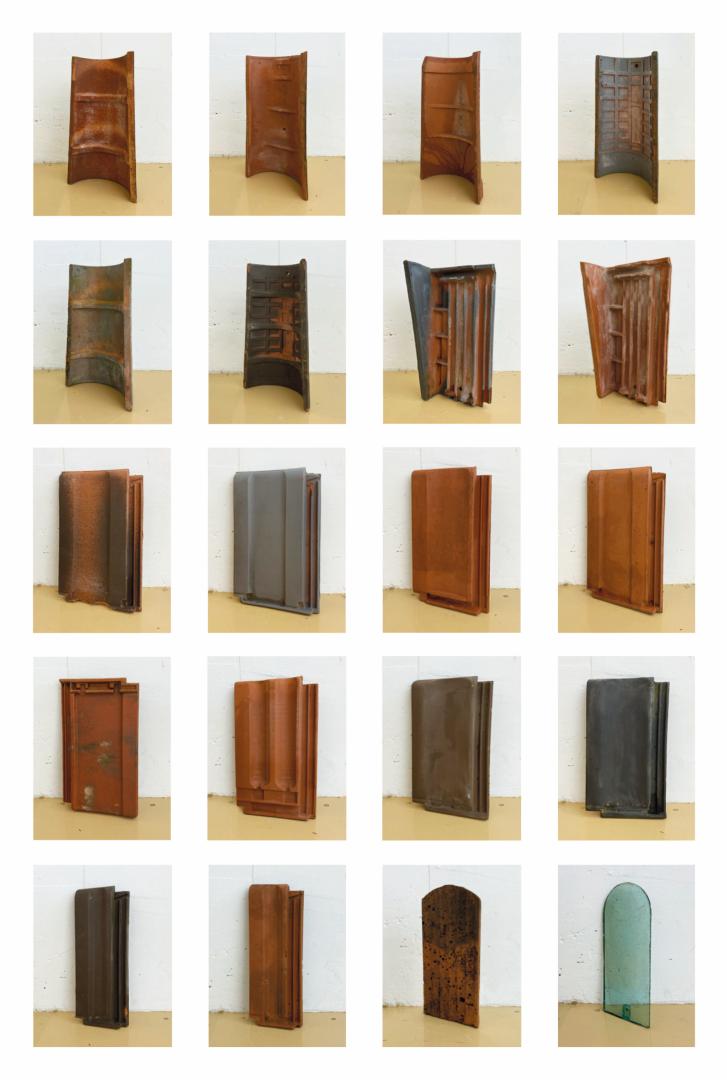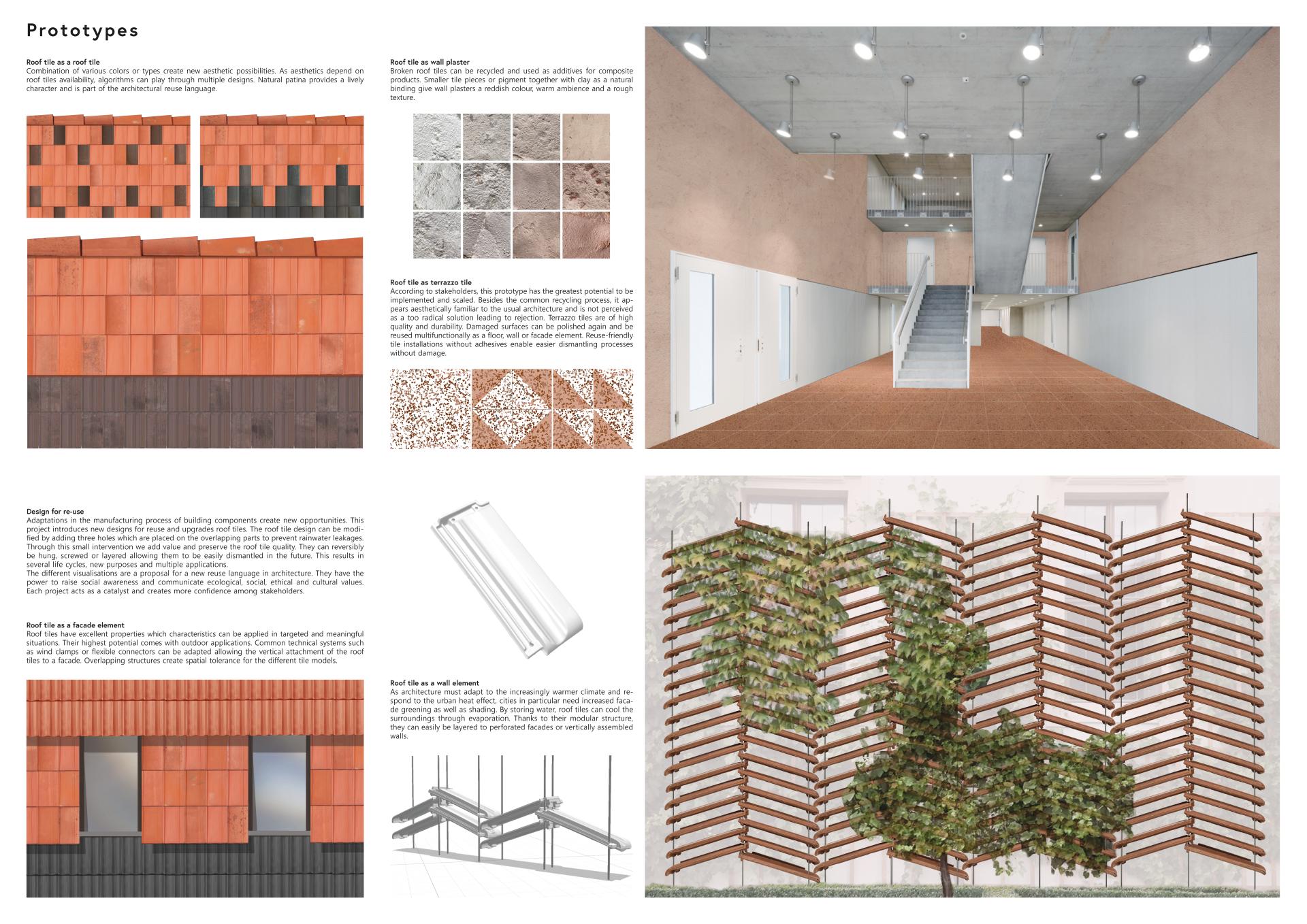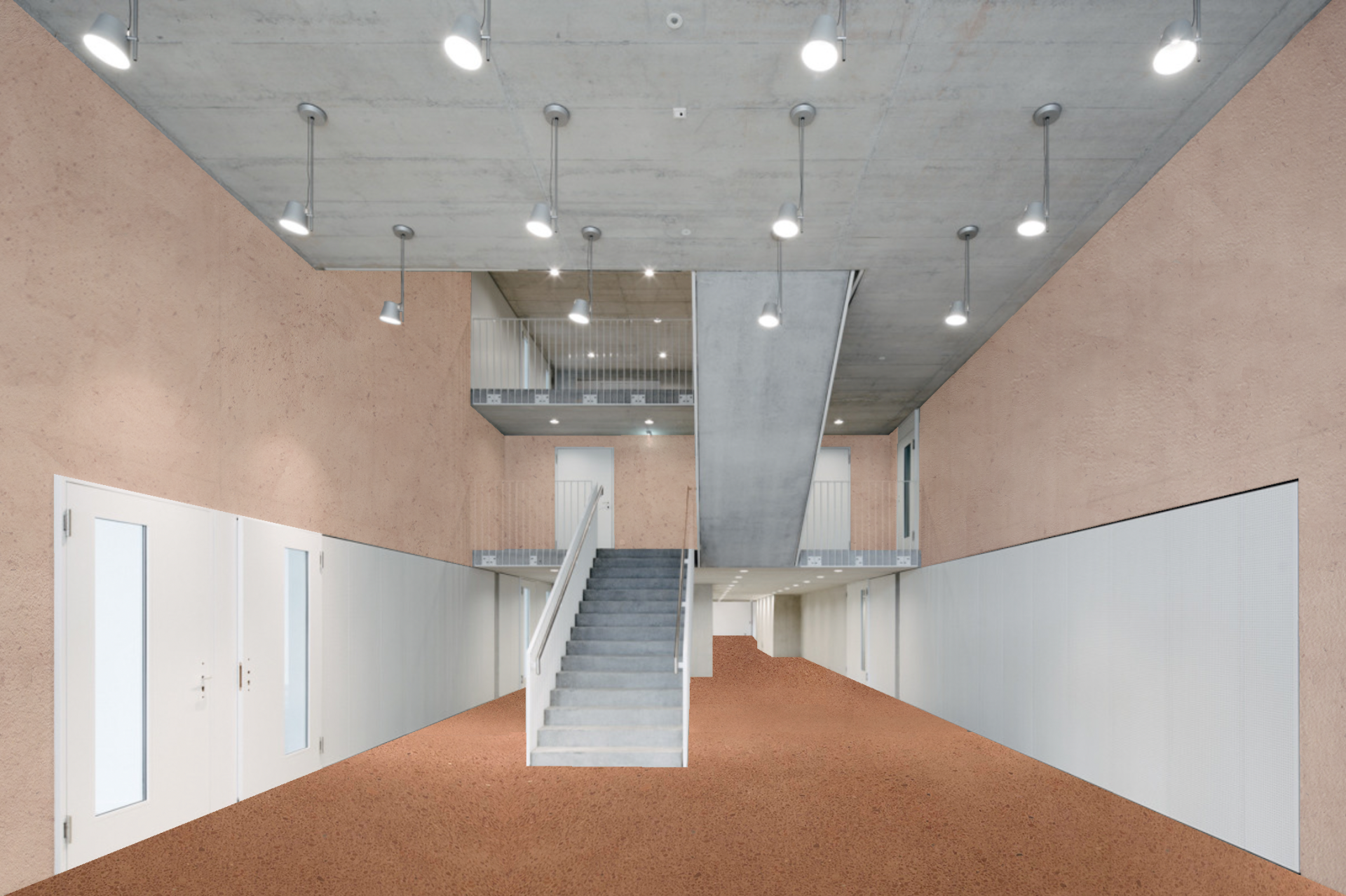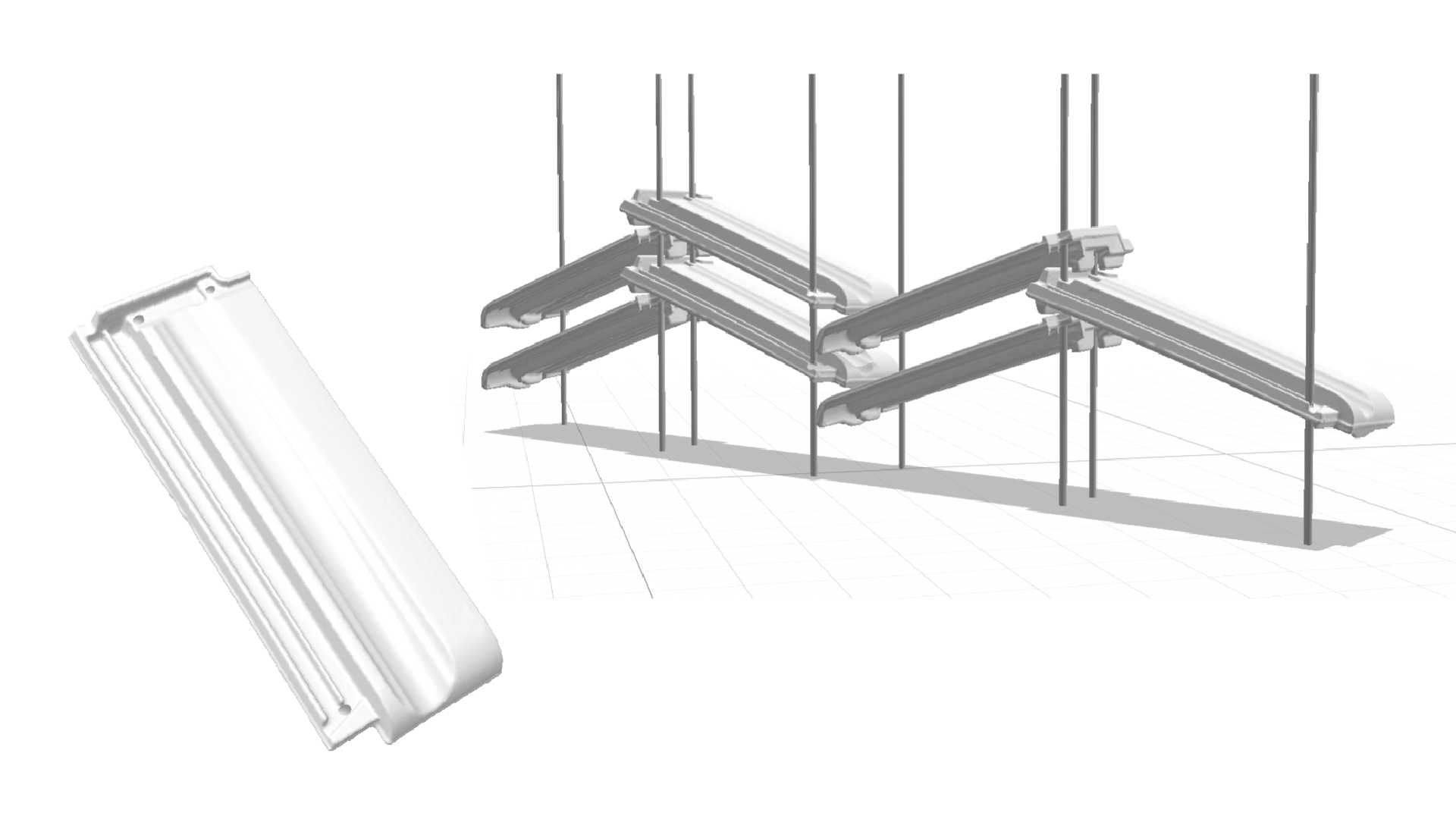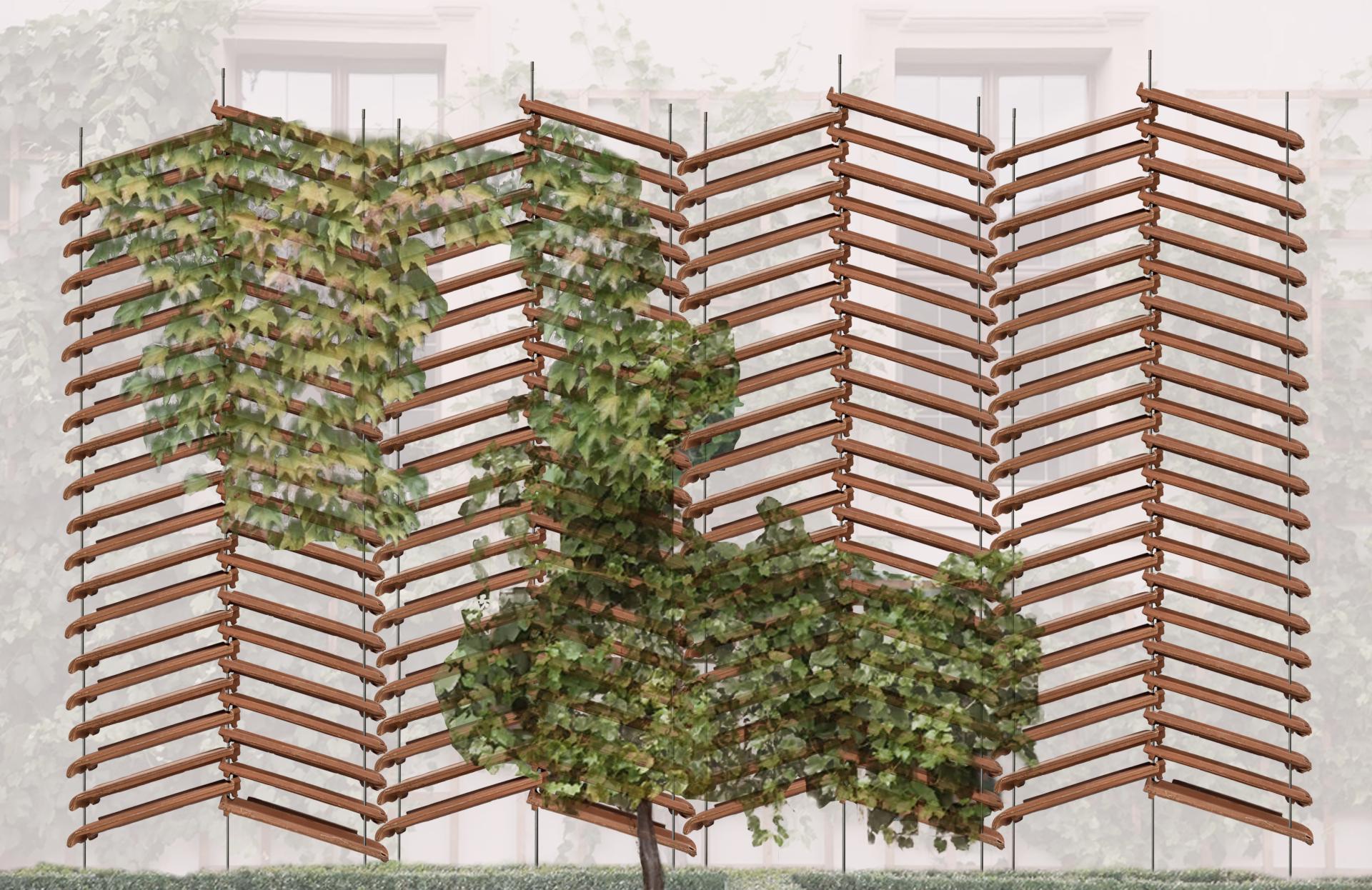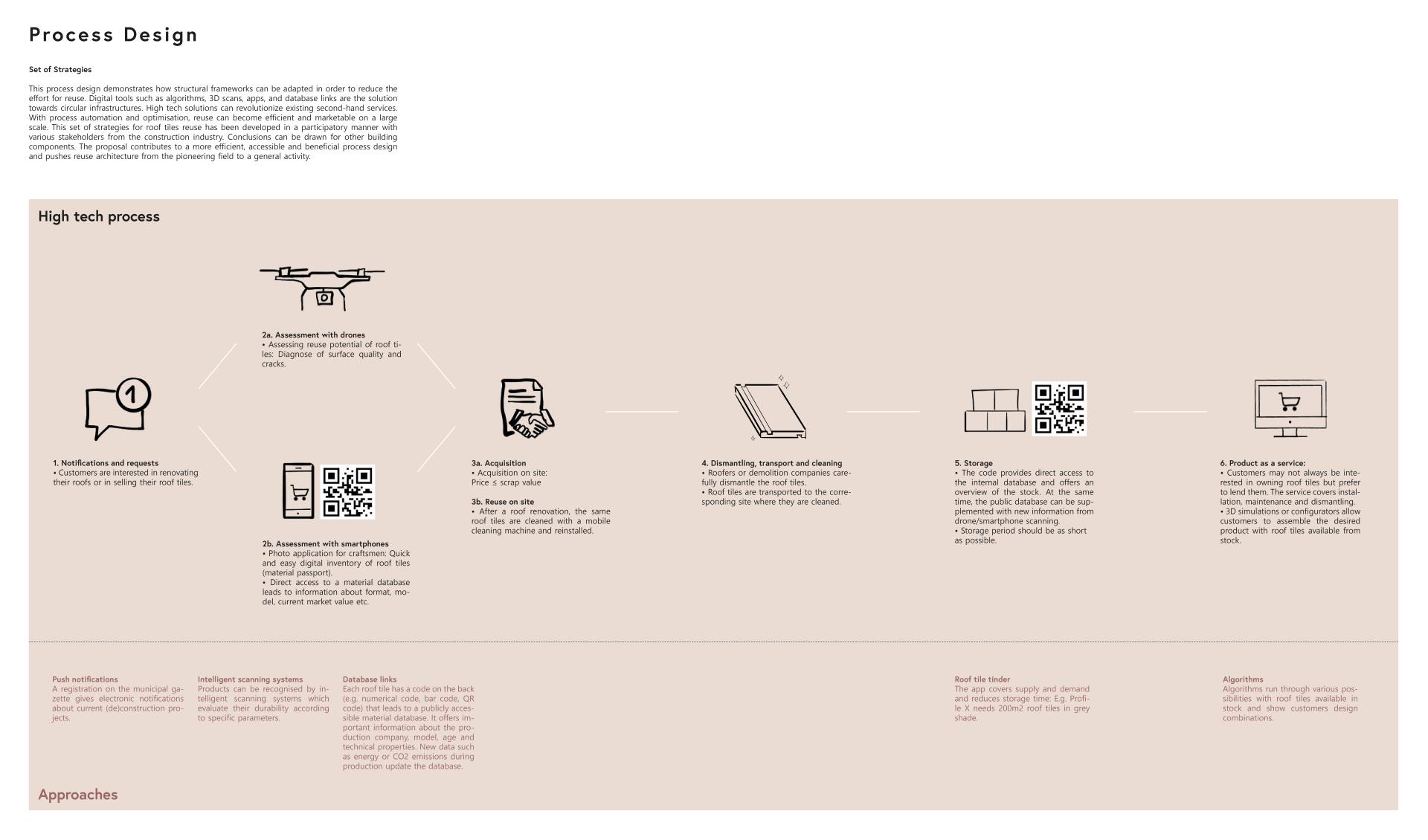Building Circularity
Basic information
Project Title
Full project title
Category
Project Description
The world’s resources are limited. Innovative designs for reuse contribute to social awareness and serve as a catalyst for new aesthetics in architectural language. This project chooses roof tiles as a tangible case study for value enhancement. Modifications in the roof tile design allow unconventional and multifunctional reuse purposes. Together with high-tech solutions, a more efficient and scalable process design can push reuse architecture from the pioneering field to a general activity.
Geographical Scope
Project Region
Urban or rural issues
Physical or other transformations
EU Programme or fund
Which funds
Description of the project
Summary
The world’s resources are limited. Reusing building components is a pivotal step towards a contemporary architecture in respect of circularity. It is high time to challenge the roles of architects, manufacturers and consumers with new sustainable solutions. This project introduces high-tech answers to make reuse processes such as assessment, logistics and reassembly far more efficient. Especially where labour costs are high, processes can be automated through digital tools. In addition, innovative designs for multifunctional reuse purposes enable unconventional utilisations for different contexts. A set of visualisations and best practices highlights the potential of reuse and serves as a catalyst for new aesthetics in architectural language. Social acceptance for reuse architecture can be achieved by increasing the value of building components. Exemplarily, roof tiles have been chosen as a tangible case study. The roof tile has excellent properties, is highly durable, diffusible, easy to dismantle, heat-retaining as well as fire-resistant. Its low market price represents the major challenge for reuse. Elaborated roof tile options allow also to draw conclusions for other building components. This proposal contributes to the social awareness and sees itself as part to scale up the reuse of building components. It encourages changes in the whole value chain from manufacturing to planning and shows how various stakeholder involved in the construction field can make a difference towards a more responsible building industry.
Key objectives for sustainability
Nowadays roof tiles are being produced and rarely reused. In most cases old tiles are being destroyed and downcycled for outdoor flooring. This equals to a linear approach. Roof tiles are a sustainable and circular product and should be (re)used as such.
There is a far larger potential to add value and expand the lifecycle of roof tiles through more efficient, accessible and scalable process designs. It is essential to build suitable framework conditions especially where labour costs or scepticism towards second-hand building components are high. This way we can foster supply and demand as well as increase the attractiveness of reusable products. Equally important to the broadening of infrastructure is building flexibility which enables the reuse of components. Structures must be joint-reversible in order to respond to changing needs and applications. Reversible joints enable buildings to be easily dismantled into their single elements and become a resource for new constructions. My project introduces new designs for reuse and upgrades roof tiles. Specific interventions in the production process allow hanging, screwing or layering the roof tiles without mortar. The advantage are multifunctional applications and quick dismantling processes. The entire life cycle of roof tiles must be considered.
This concept creates value and can exemplarily be transferred or adapted towards other building components. Thanks to circular architecture we can preserve building culture and grey energy as well as reduce the global greenhouse gas emissions and waste.
Key objectives for aesthetics and quality
A roof tile is not a roof tile, but a modular, wavy, solid and weather-resistant element. This can be reused multifunctionally in a new context and can manifest itself in a wide variety of aesthetic expressions. My different visualisations are a proposal for a new reuse language in architecture. They have the power to raise social awareness and communicate ecological, social, ethical and cultural values. Each project acts as a catalyst and creates more confidence among stakeholders. As aesthetics depend on roof tiles availability, algorithms can play through multiple designs. Natural patina provides a lively character and is part of the architectural reuse language.
Key objectives for inclusion
Reuse success depends on a wide support. All project stakeholders have an impact on whether building components can be reused or not. Collaboration efforts require contributions from designers as well as major players in society, politics, media, education and the entire value chain of the construction industry. Open knowledge and best practice exchange are key elements to develop reuse and make it accessible. Life-centered design fosters cooperation and brings together different disciplines. My project followed a scientific approach reflecting needs, issues, recommendations and feedbacks from stakeholders. The exchange with players from the manufacture, architecture, reuse, education and digitization fields were essential for a co-design.
In my first workshop I explored hands-on working with 1:1 mock-ups and found constructional and aesthetical solutions for the reuse of roof tiles. My second workshop was dedicated to roof tiles process design. Here we identified problem areas, evaluated prototypes and developed improvements for a large-scale infrastructure. Minimized reuse efforts as well as a qualitative and quantitative second-hand roof tiles offering are key to accessibility and affordability for the wide public. Economics is supported by the opportunity to preserve and create new jobs. In times where resource scarcity, raw material cost increase and supply chain challenges become everyday problems, the value creation shifts from production to reuse.
Physical or other transformations
Innovative character
Reuse of building components is a great opportunity and a sustainable answer to humankind needs in a world with limited resources. My project is a contribution to preserve ecological, socio-cultural, material and monetary values. It demonstrates the feasibility of a profitable, aesthetical and inclusive reuse which can be applied from small to large scale.
As architecture must adapt to the increasingly warmer climate and respond to the urban heat effect, cities in particular need increased facade greening as well as shading. Roof tiles have excellent properties which characteristics can be applied in targeted and meaningful situations. Their highest potential comes with outdoor applications. By storing water, roof tiles can cool the surroundings through evaporation. Thanks to their modular structure, they can easily be layered to perforated facades or vertically assembled walls. Through visualized examples, my project introduces multiple creative solutions for roof tiles applications. Multifunctionality and adaptability support new aesthetics and architectural languages. Reuse inclusion embraces appreciation for material, building culture and craftsmanship setting an example also for large scale architecture.

